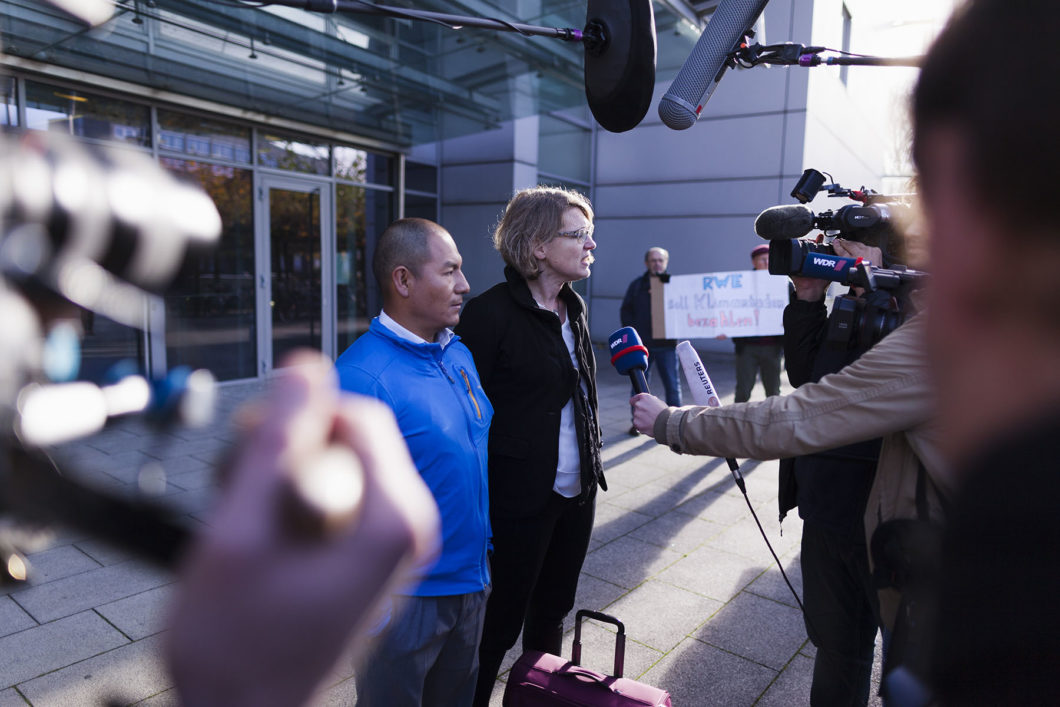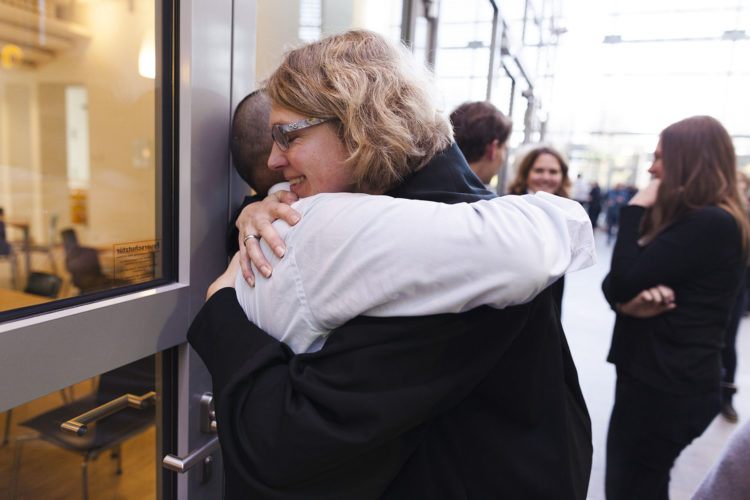In November 2017 the second hearing in the process of Saúl Luciano vs
RWE took place in Hamm. The decision of the jury was, as was described
by the media, historical and gave way to a next stage in which the two
parties have to reach an agreement and designate two specialists who
will perform a detailed study of the context that gave rise to the
lawsuit. Thus, the decision of the jury opens the door to a review of
the same legal system that has been challenge by this demand.
It was a legal victory that filled with emotion almost everyone who was
present during the trial, however, the situation in Huaráz remains the
same. The risks are still there, as well as the consequences of the
changes already caused by global warming and the worries of specialists
and the informed population facing the threat of the mountain lakes. The
disappearance of the glaciers of the Cordillera Blanca driven by global
warming is a highly complex process that trigger severe changes in
almost every aspect of the daily life not only in the region but
throughout the country making impossible to expect that a judicial
process will stop or decrease these changes. So why it is then important
to continue with the case?
It is clear that the judicial system is just a part of a larger system
created by the existing relationships between various actors, from the
civil society, the state, the market to the media. The decisions and
actions taken by each of them will inevitably affect the system and the
social order, challenged already by the lawsuit, for better or for
worse. In many cases, as in Saul’s demand against RWE, the consequences
of those decisions also have global significance. Having been present
during the trial in Hamm’s court, it was quite interesting to witness
directly the conflict ignited by Saul’s claim in the legal realm. A
conflict between two diametrically different positions and yet both
legally comprehensible; a struggle in which the mediators, the judges,
should take sides in one or the other position and in which the choice
would inevitably bring severe consequences for all parties, including
the judges. It is quite probable that another judge would have taken a
completely different decision based on the same presented information,
even the same judge who chose to give green light to the claim, one year
ago would have taken a different decision. The subjectivity of this
decision leaves many open questions about the essence of what we
understand as justice and its reliability.
Few days before the hearing in Hamm, the city of Bonn witnessed one of
the largest manifestations of climate justice ever undertaken; thousands
of individuals, groups, organizations demanding justice and structural
changes in our energy production and consumption models. It was obvious
that the topic couldn’t be overlooked. Despite the fact that a trial
decision will not stop a possible outburst flood from the Palcacocha
lake that could destroy the lives of thousands of people in the city of
Huaraz when we pay attention to the context in which the trial is
immersed, we can see the patterns, connections and trends that arise
from different contexts and cases. Saul’s demand is not an isolated
event, nor is the emergence of concepts such as climate litigation so
much discussed during the COP or the climate demonstration in Bonn, they
are all part of a larger narrative that unites them and connects
individuals and groups in all parts of the world.
The decision of the judge in the court in Hamm was not only supported by
the typical rhetoric of law, it included something else, a human
perspective on what is right to do even though the following path could
bring more complications to solve and even bring a lot of uncertainties
to the system.

